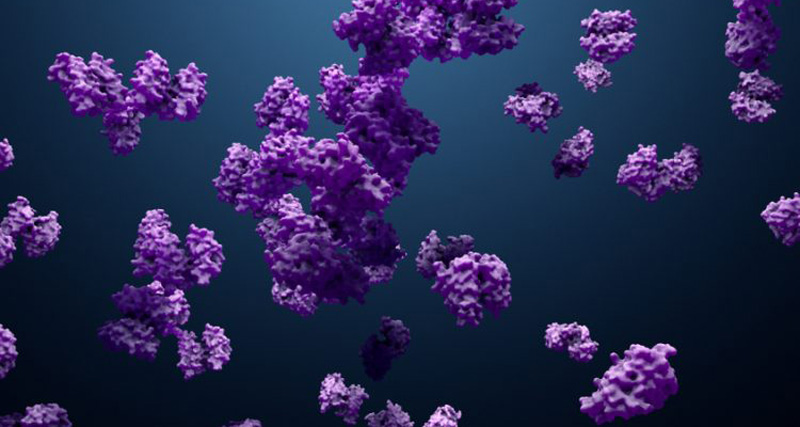
Enzymes are commercially used in industries. It is widely used in making brewing beer, baking bread, cheese, tanning leather, and many other products. Due to advancements in molecular biology, cellular content having enzymes are used. Earlier, whole-cell was used and was not very economical.
It is well said that in the world of modernization, the growth of the economy of a country is directly dependent on industrialization in the country. Various industry including pharmaceuticals, chemical production, biofuels, consumer products, animal feed, food, and beverage depends on the use of enzyme for production of a large amount of product.
Enzymes are biological compound that increases the rate of reaction by decreasing the activation energy.
In other words, enzymes act as catalysts and accelerate the chemical reaction. Most enzymes are protein. But there are some non-proteinaceous enzymes are also present. Enzymes are present in cells and they regulate the biological processes occurring within a cell. Nowadays enzymes are used in medical and industrial purposes.
Enzymes are classified on the basis of what type of reaction they catalyze. For the common purpose, enzymes are segregated into four types depending on the substrate it uses and catalysis activity.
Enzymes that use carbohydrate as a substrate and hydrolyze it to smaller units are called carbohydrases. Complex sugar is broken down into simple sugars. There are two subtypes of carbohydrases that are as follows.
It catalyzes a hydrolysis reaction in which starch is converted into sugars. They are used in fermentation while making brewing beer and liquor. In the food and beverage industry, amylases are used in baking processes. It increases the volume of bread, increases the speed of fermentation, improves the texture and color of the bread.
This enzyme breakdown cellulose into monosaccharides such as glucose or other oligosaccharides. It is widely used in the paper industry.
It catalyzes oxidation reaction in the substrate. It improves the gelatinization and tensile characteristics of the flour. Oxidase also increases the elasticity of the dough.
These enzymes that peptide bond present in the protein and convert it into small peptides or amino acids. It is used in the pharmaceutical, detergents, animal feed, chemical industries. It improves the mechanical properties and baking quality of the dough.
It is responsible for catalyzing the hydrolysis of fats. It plays important role in digestion. The use of lipase in baking delays the aging of starch and improves the quality of bread.
They catalyze the synthesis of polymers. DNA and RNA polymerases synthesize DNA and RNA respectively. The polymerase is used in the polymerase chain reaction. It is used in medicinal research, and bio-industry.
Enzymes are extracted from plants, animals, and microorganisms. Microorganisms-based enzymes are derived from bacterial, fungal, and yeast enzymes. Fruits and plants are good sources of phenol oxidases, esterases, and hydrolases. Animal-based enzymes are obtained from the stomach and pancreas of cattle and swine.
For industrial use, the extracted enzymes undergo upstream and downstream processes. Upstream processes involve the steps that lead to the generation of purified enzymes. It includes a selection of the desired enzyme, selecting a suitable source of enzyme, process development, and large-scale production.
Downstream processes include removal of insoluble material, the concentration of enzymes, and purification of the enzyme.
Enzymes are widely used in the food and beverage industry. It improves baking quality, nutritional quality, texture, storage resistance of the food items made up of flour. Catalase and lactase are used in dairy processing. Protease and lipase are the most common enzyme used in making detergents. It remove stains from the clothes.
It is difficult to remove fats and oils from the laundry at low temperatures. In the biofuel industry, the enzymes use acids and cellulose as substrates, there is a higher yield of product. Lipases hydrolyze triglyceride to free fatty acids and glycerol. Enzymes are also used in animal feed, textiles, Pulp & Paper, nutraceutical, Personal Care & Cosmetics, and wastewater.
The enzyme market has been witnessing rapid growth due to growth in the food industry and restaurant chains. Enzymes are biocatalyst. In recent years, from research and development in the field of molecular biology.
It has become easy to identify target enzymes, their extraction, and purification. This led to increased demand for enzymes in various industries. Various enzymes like carboxylase, lipase, protease, polymerase, etc are widely used in industries.
The demand for industrial enzymes is increasing. The growing population and rapidly developing textile industry are positively contributing to increasing the demand for industrial enzymes in various industries.
The Global enzyme Market has been anticipated to rise at a growth rate of 8% CAGR over the forecast period.